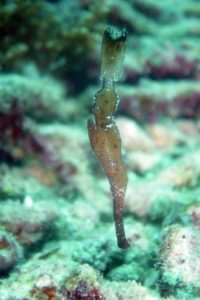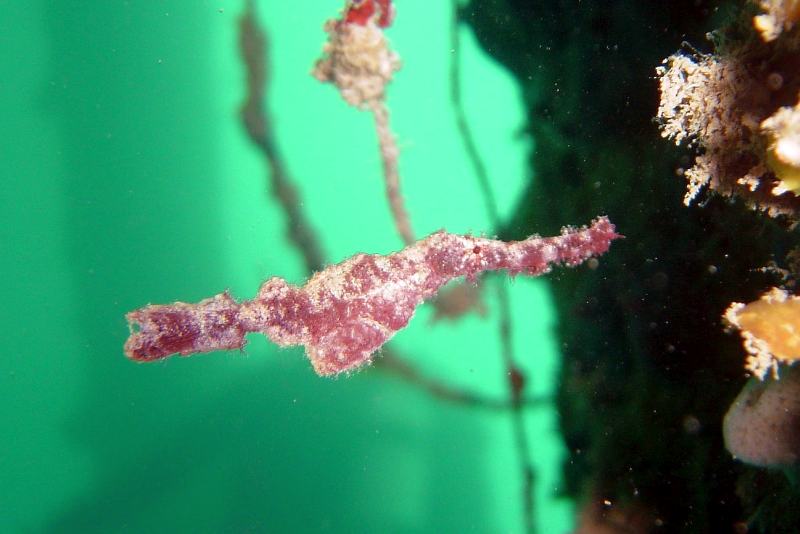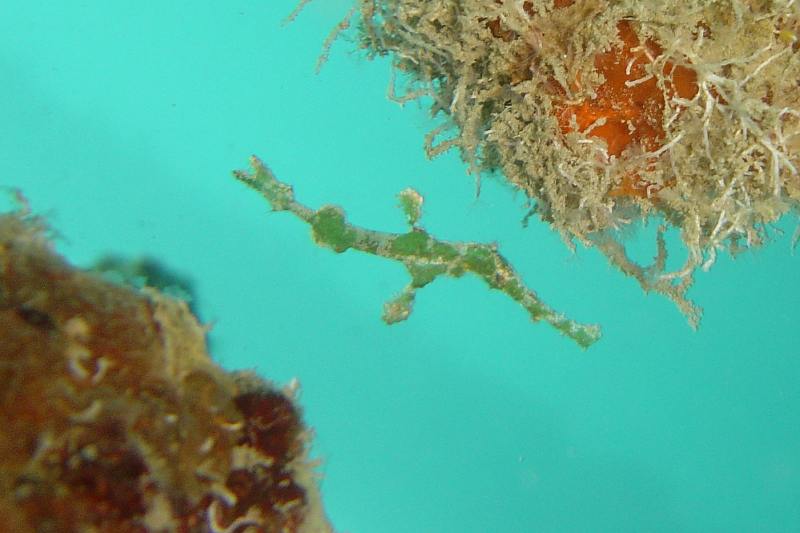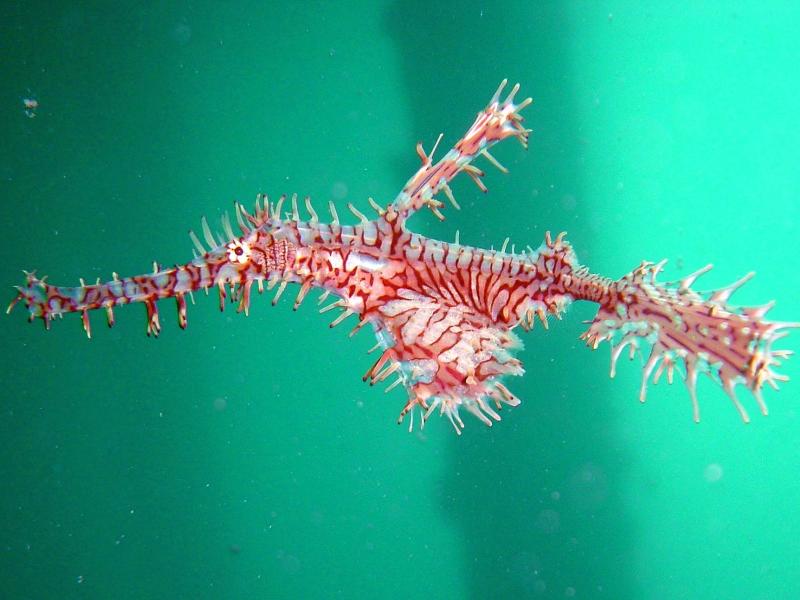
Ghost pipefish are small fish that belong to the same order as seahorses and sea dragons.
They appear seasonally in shallow waters on coastal reefs and mucky sediments. Ghost pipefish are masters of disguise and divers get always excited finding these unusual fish.
Perfectly camouflaged they remain motionless and blend in well with their surroundings so that it is nearly impossible to find them.
It needs experienced eyes to beat their mimicry and knowledge of their preferred habitat to spot them amongst crinoids, sponges, coral or seagrass.

Ghost Pipefish (Solenostomus)
Description
Ghost pipefishes grow to be about 10 to 15 centimeters long.
They have a short, laterally flattened body, which is not even 1 centimeter wide.
Their body is covered with small scales.
Several different species that mimic their respective environment and perfectly blend in.
Typical for the Harlequin ghost pipefish are the thorn-like skin appendages reminiscent of the feathers of feather stars.
The robust and delicate ghost pipefish, on the other hand, look like seaweed.
Coloring and appearance can vary widely within one species, between the sexes, as well as between adults and juveniles.
Feeding
The family name Solenostomidae derives from the Latin solen = tube and stoma = mouth.
With those tube-like mouth’s ghost pipefish feed mainly on small crustaceans, shrimp, and other small bottom-dwelling invertebrates.
They float often with their heads down and show little movement. When prey nears, they suck it in through their tubular snout.

Ghost Pipefish in Fiji
Where do ghost pipefish live
Ghost pipefish are seasonal and are only present for a few months of the year, usually during the summer month when the water is warmest.
In Fiji, this is from December through to February. After that they disappear, I have never seen one in the cold time of the year.

Ghost pipefishes preferring sheltered spots such as shallow protected reefs, coastal bays or ‘muck’ sites. They seem to love to hang out under Jetties.

Life cycle and reproduction
Not that much is know about their life cycle.

They spend the greater part of their life as a larval stage in the pelagial.
When grown enough to reproduce the morph into an adult form and settle in shallow protected waters and coral reefs to a depths of up to 25 meters.

They usually appear in pairs and seem to be monogamous.
The female ghost pipefish broods the eggs. Its large pelvic fins form a pouch under the body in which the eggs are kept.
Soon after the young have hatched, the adult fish disappear.




